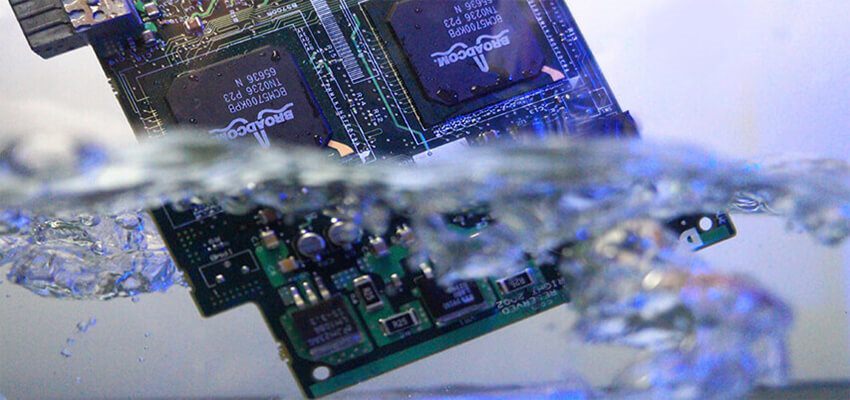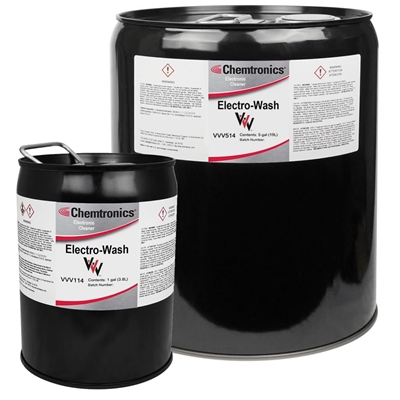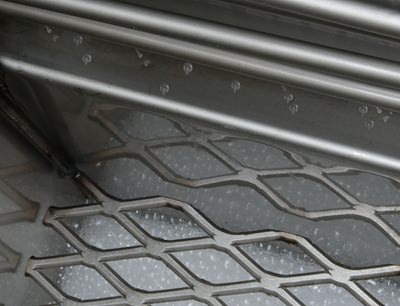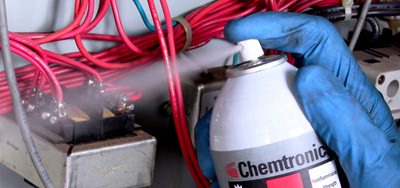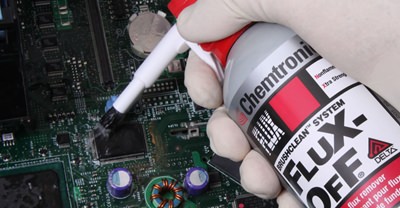When deciding on the right vapor degreaser solvent to be used in your vapor degreasing process, there are quite a few factors involved. They include, just to name a few, performance, cost, compatibility with the existing unit, and exposure limits to the workers.
Because of ever-tightening environmental regulations and safety requirements, single-component vapor degreasing solvents are becoming a rarity. Chemicals like Freon, HCFC-141b, and HCFC-225 have been eliminated because of ozone depletion, and solvents n-propyl bromide (nPB) and trichloroethylene (TCE) have serious health concerns (see our blog post 4 Toxic Chemicals Hiding in Your Company's Contact Cleaners and Degreasers for more information). What’s left are blends that contain two, three or more solvents that all have to work together.
As you sift through data sheets, you might be stumped by the terms “azeotrope” or “azeotrope-like” (also referred to as “near-azeotrope”), and whether or not they are important considerations. First you must understand the concept of an azeotrope.
What is an azeotrope?
An azeotrope (as used in the cleaning world) is a mixture of two or more liquids whose chemistries are exactly the same in both vapor and liquid phases. There are properties of any azeotrope that are unique. For example, a binary solvent blend contains two solvents each with its own boiling point. Combining these two in a precise manner, the resulting product exhibits a boiling point different than either of the individual components and maintains that new boiling point throughout the process. It acts as a single component product.
What is an azeotrope-like?
Near-azeotropes, on the other hand, will fractionate (split) the two ingredients to a small degree as they boil. Although stable once equalized, the composition of the vapor and liquid phases are not exactly the same. One phase will be skewed greater towards one component while the other phase will trend towards the properties of the second component. Due to this, there may be small differences in cleaning performance between the liquid and vapor phases.
Azeotrope-like advantages in Vapor Degreasing
Now that you understand the terms, let’s look at the comparative advantages of an azeotrope versus azeotrope-like in vapor degreasing. In a near-azeotrope system, you will probably get slightly better performance with soil in one phase or the other. This could be beneficial in the vapor phase if you are restricted from using immersion due to the sensitivity of components, materials, or other factors.
When using a near-azeotrope solvent over a longer period of time, the relative concentrations will shift due to solvent losses from vapor escaping the cool zone or drag-out. Depending on the composition of the solvent blend, the operating condition of the equipment, and the duration, the change in the component ratios may produce an unsafe operating condition, or at the very least, impede cleaning performance. For example, one component of the solvent mixture may quench the flammability of the other, so a change in the component ratio could increase the likelihood of the vapors igniting.
Azeotrope advantages in Vapor Degreasing
1) Assuming there is no agitation in the boil sump (e.g. ultrasonic), you will see equal cleaning power whether through immersion in the liquid phase or condensation cleaning in the vapors.
2) If your unit is combined with a distillation unit for separation and cleaning of the solvent on a periodic basis, it works much better with an azeotrope. Essentially, what you put into the still is returned to the unit minus any contaminants. You don’t have to worry about the composition drifting and increasingly “overloaded” with a component over time.
For increased sump time while maintaining consistent performance, an azeotrope is always preferable over a near-azeotrope (all else being equal) when incorporating a distillation unit. This ensures you are putting back into the unit what you started with. Drag-out, vapor losses, and other inefficiencies have little effect on cleaning performance because the product acts as one-component chemistry. For near-azeotrope chemistries, drag-out and other losses must be replaced to ensure the unit and chemistry act together in a safe and efficient manner.
Azeotrope-like offer more options to your Vapor Degreasing Process
So why even consider a near-azeotrope? The simple reality when selecting vapor degreaser solvents is there are more options for near-azeotrope than full azeotrope products. If you can work with the limitations of a near-azeotrope solvent (and most can), you are more likely to find a product that meets your performance requirements at a more reasonable price.
Our technical team can help guide you in the decision-making process as well as dive deeper into the product details you need in making the correct choice for your process. Feel free to contact us regarding any questions or concerns that you have, or call 770-424-4888.
Use our vapor degreaser selection guide to find the right vapor degreaser solvent for your application.

